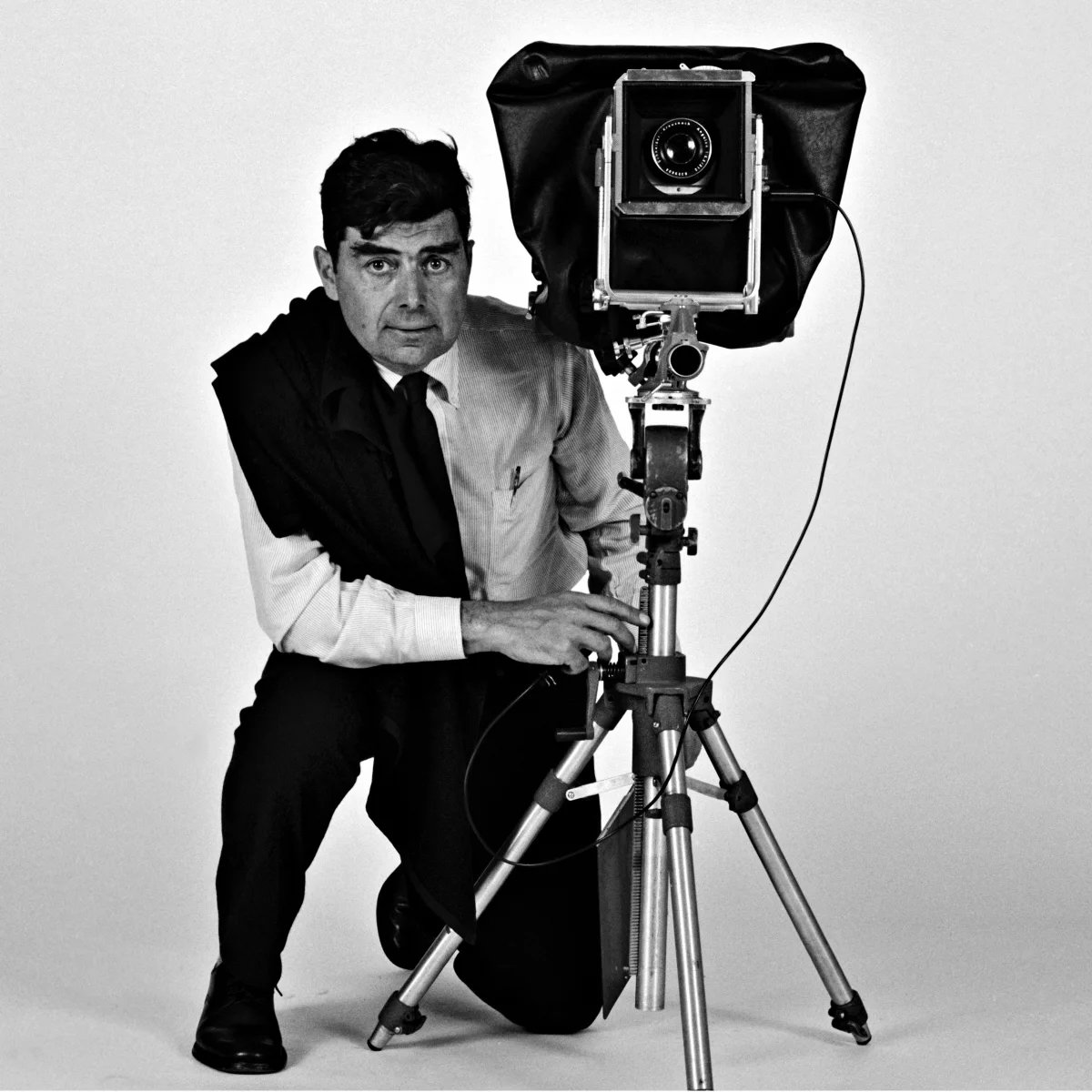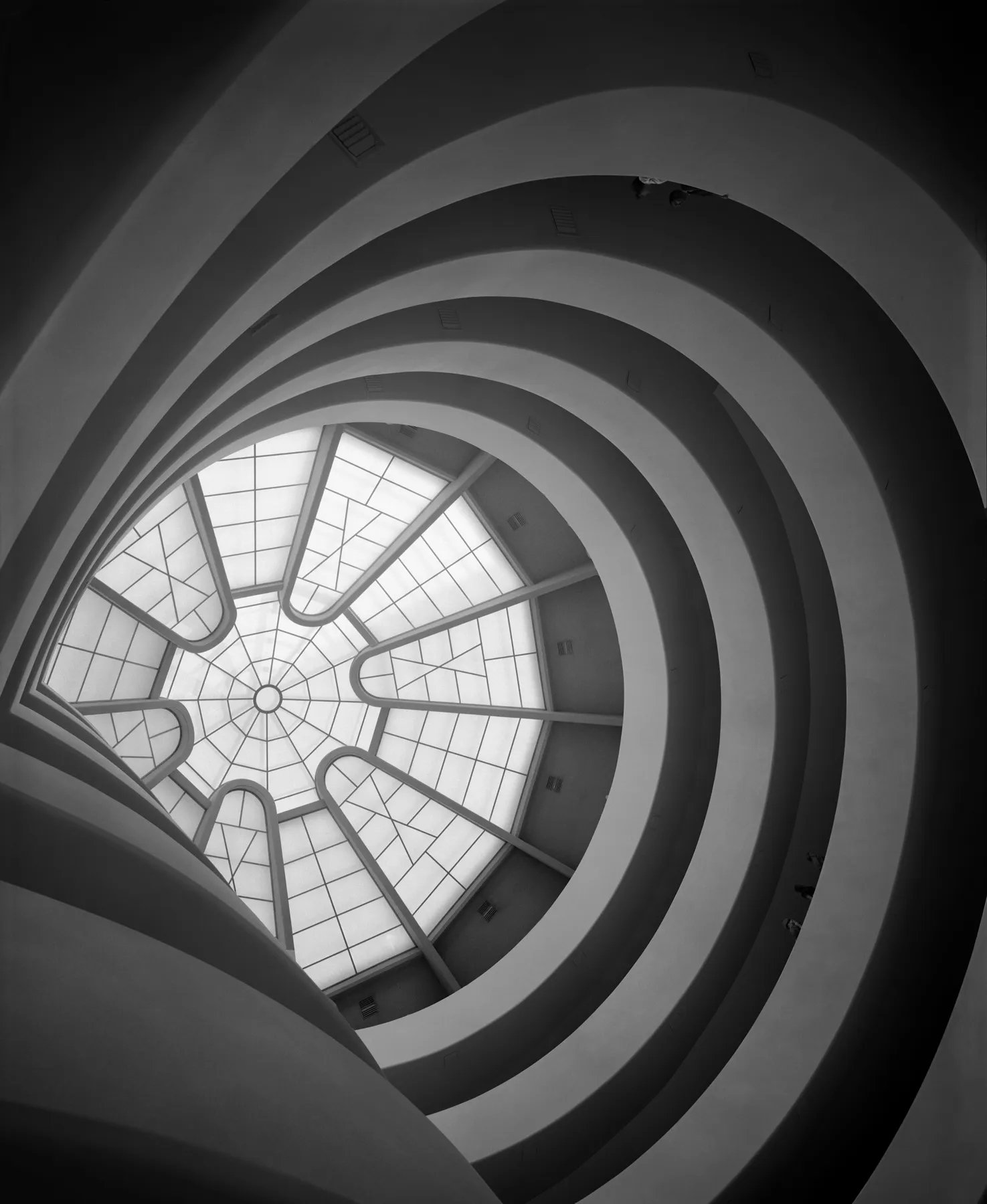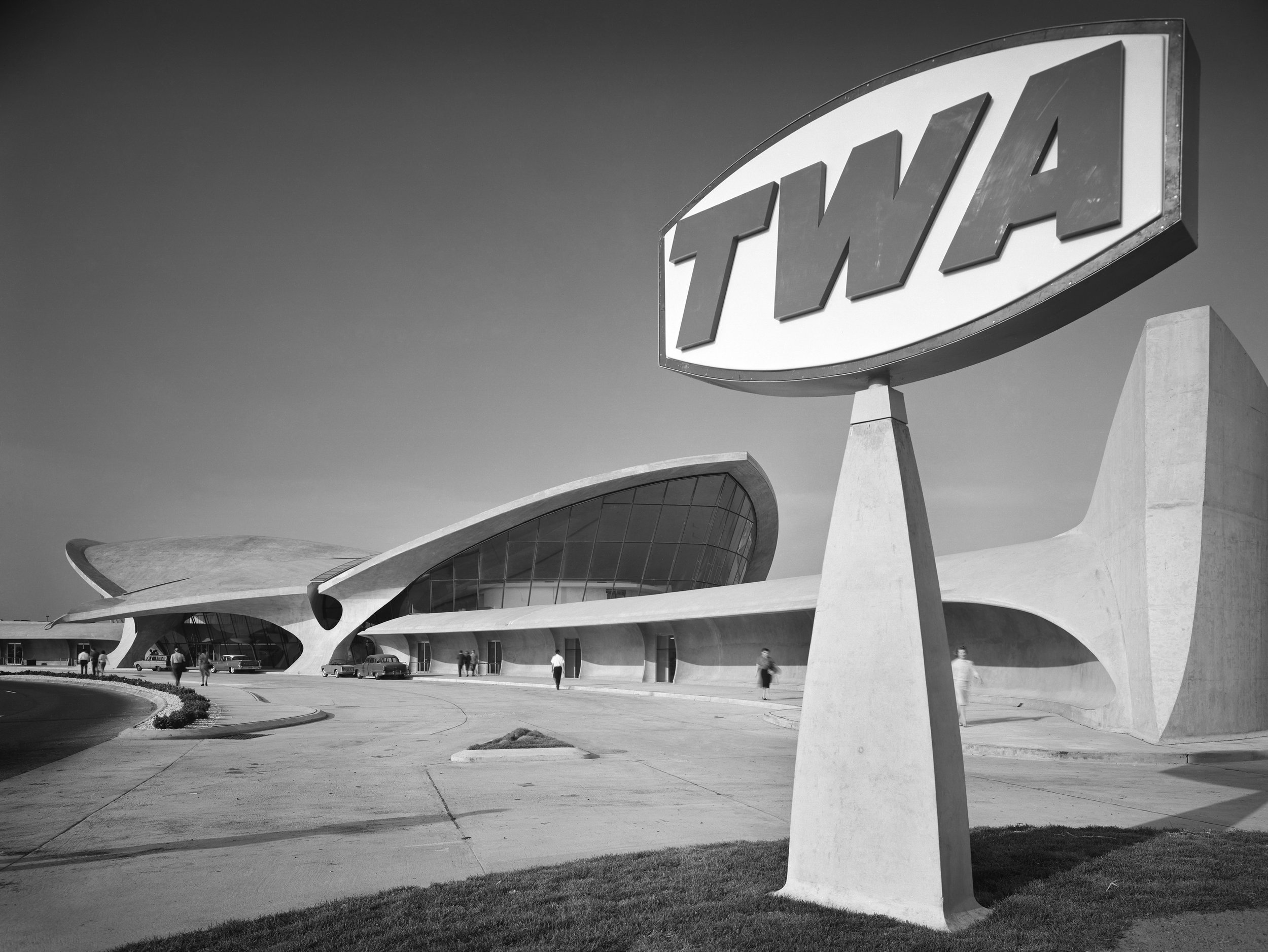Ezra Stoller
Ezra Stoller (1915-2004) (website) was an American architectural photographer who earned widespread acclaim for his striking images of iconic mid-century modern buildings. As a master of his craft, Stoller's work has had a lasting impact on the field of architectural photography and continues to inspire generations of photographers.
Early Life and Career
Born in Chicago, Ezra Stoller grew up in New York City. He studied architecture at New York University before deciding to pursue photography as his primary profession. After serving as a photographer during World War II, Stoller returned to New York and began focusing on architectural photography. He quickly gained recognition for his exceptional ability to capture the essence of modern architecture, earning commissions from renowned architects such as Frank Lloyd Wright, Eero Saarinen, and Ludwig Mies van der Rohe.
Photographic Style and Techniques
Stoller's photographic style is characterized by his keen eye for composition, precise framing, and immaculate attention to detail. He was known for his careful consideration of lighting and perspective, which allowed him to showcase the true essence and beauty of each architectural subject. Stoller's images exude a sense of clarity and simplicity, capturing the essence of modernism while highlighting the structural integrity and functional beauty of each building.
Career Highlights
Throughout his career, Stoller photographed many iconic buildings, including the Guggenheim Museum, the Seagram Building, and the TWA Terminal at John F. Kennedy International Airport. His work has been featured in numerous publications, such as Architectural Record, Architectural Forum, and House Beautiful. In 1961, Stoller became the first architectural photographer to be awarded a medal for his contributions to the field by the American Institute of Architects.
Photography Gear
While specific details about Stoller's equipment throughout his career are not widely documented, it is known that he preferred to use large-format cameras for their superior image quality and precise control over perspective. Some of the equipment Stoller may have used include:
Large-format cameras: These cameras, typically using 4x5-inch or 8x10-inch film, offer exceptional detail and control over perspective and depth of field.
Wide-angle and normal lenses: To capture the full scope of architectural subjects, Stoller likely used a variety of lenses, including wide-angle and normal focal lengths.
Tripods: Given the need for stability and precision in architectural photography, tripods were likely an essential part of Stoller's gear.
Photography Books
"Ezra Stoller: A Photographic History of Modern American Architecture" offers a comprehensive look at Stoller's photographic documentation of iconic American buildings. This book showcases his skill in capturing the essence of modern architecture, providing inspiration for photographers interested in this specialized field.
"Ezra Stoller, Photographer" delves into the life and work of Stoller, offering a fascinating insight into his approach to architectural photography. This book explores his techniques, equipment, and artistic vision, making it an invaluable resource for photographers looking to learn from a master of the craft.
"Ezra Stoller: Photographs of Architecture, 1939-1980" is a collection of Stoller's architectural photography spanning over four decades. This book demonstrates the evolution of his style and showcases his ability to capture the essence of various architectural styles and movements, providing valuable inspiration for photographers interested in the subject matter.
"The TWA Terminal: The Building Block Series" focuses on Stoller's photographs of Eero Saarinen's iconic TWA Terminal at JFK Airport in New York. This book offers a unique perspective on this architectural masterpiece, highlighting Stoller's talent for capturing the essence of a building through his lens.
"Frank Lloyd Wright's Fallingwater: Building Block Series" is an exploration of Stoller's photographs of Frank Lloyd Wright's iconic Fallingwater residence. This book showcases Stoller's ability to capture the beauty and innovation of Wright's work, providing a valuable resource for photographers looking to hone their skills in architectural photography.
Quotes
"Architectural photography is more than just a documentation of a building."
"The key to architectural photography is knowing how to read a building."
"The camera is a remarkable instrument. Saturate yourself with your subject, and the camera will all but take you by the hand and point the way."
"Photography is an important part of understanding architecture."
"Architectural photography is a discipline that requires an understanding of design and the ability to interpret it in a visual language."
Legacy and Influence
Ezra Stoller's legacy continues to impact the world of architectural photography, inspiring both aspiring and established photographers. His precise compositions and careful attention to detail have set a high standard for architectural photographers worldwide. Stoller's work serves as a visual record of some of the most significant architectural achievements of the mid-20th century and continues to be a source of inspiration for contemporary photographers.
In addition to his influence on architectural photography, Stoller's work has also impacted the broader field of photography. Photographers such as Iwan Baan, Hélène Binet, and Thomas Struth have drawn inspiration from Stoller's approach to capturing the essence of architectural structures. His images have not only been instrumental in shaping the public's perception of modern architecture but have also contributed to the establishment of architectural photography as a respected discipline within the realm of fine art photography.
In summary, Ezra Stoller's exceptional body of work has left an indelible mark on the field of architectural photography. His ability to distill the essence of modern architecture into compelling visual narratives has earned him a place among the most revered architectural photographers of all time. His influence on future generations of photographers, both in the realm of architecture and beyond, is a testament to the enduring power of his vision and his unwavering commitment to the art of photography.












